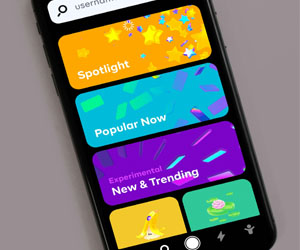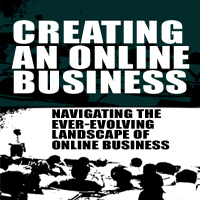


Strategies For Success

In the digital age, online advertising has become a cornerstone of marketing efforts for businesses across the globe. However, along with its numerous advantages, online advertising presents several challenges that marketers must overcome to achieve success. In this article, we'll explore some of the most common online advertising challenges and strategies to navigate them effectively.
1. Ad Blocking Software
The rise of ad blockers presents a significant challenge for online advertisers. These tools allow users to block or filter out online ads, diminishing the reach and effectiveness of advertising campaigns. To tackle this challenge, advertisers should focus on delivering non-intrusive and valuable content that users are less likely to block. Native advertising, which blends seamlessly with the content of a website, is one approach to consider.
2. Ad Fatigue
Online users are exposed to an overwhelming amount of advertisements daily, leading to ad fatigue. This phenomenon occurs when audiences become desensitized to ads, resulting in reduced engagement and conversions. To combat ad fatigue, marketers should prioritize ad personalization, creative variety, and compelling storytelling to capture and maintain the audience's interest.
3. Fierce Competition
The online advertising space is highly competitive, with numerous businesses vying for the attention of the same audience. It can be challenging to stand out amid this fierce competition. To overcome this challenge, marketers should focus on unique value propositions, targeted niche audiences, and creative ad placements to gain a competitive edge.
4. Data Privacy Concerns
Growing concerns about data privacy and regulations like GDPR have made it challenging for marketers to collect and use consumer data for ad targeting. To address this challenge, advertisers must ensure they comply with relevant data protection regulations and focus on transparent data collection and usage practices. They should also seek explicit consent from users when gathering data.
5. Ad Fraud
Ad fraud is a pervasive issue in online advertising, leading to wasted ad spend and skewed performance metrics. Marketers should use ad verification tools and work with reputable ad networks to minimize the impact of ad fraud. Regularly monitoring ad campaigns and analyzing performance data can also help identify and address fraudulent activities.
6. Ad Viewability
Ensuring that ads are viewable to the target audience is a crucial challenge. Marketers should optimize ad placements to enhance viewability, track viewability metrics, and invest in high-impact ad formats to increase the likelihood of ads being seen by users.
7. Mobile Optimization
With the increasing use of mobile devices, advertisers must ensure their ad campaigns are optimized for mobile viewing. Responsive design and mobile-specific ad formats are essential for reaching mobile audiences effectively.
8. Ad-Blocking Laws And Regulations
Different regions have specific laws and regulations concerning online advertising. Staying compliant with these rules can be a significant challenge. Marketers should invest in legal counsel, maintain up-to-date knowledge of regional regulations, and conduct due diligence to adhere to legal requirements.
9. Ad Attribution And Measurement
Measuring the effectiveness of online advertising can be challenging due to the complexity of user journeys across multiple devices and touchpoints. Marketers should utilize multi-touch attribution models, tracking technology, and marketing analytics tools to gain a more accurate understanding of campaign performance.
Online advertising is an essential component of modern marketing strategies, but it comes with its share of challenges. Successful advertisers are those who acknowledge these challenges and implement strategies to navigate them effectively. By focusing on user-centric advertising, compliance with data privacy regulations, and vigilant monitoring, advertisers can rise above the challenges and create successful online advertising campaigns that engage and convert their target audiences.
Navigating The Mobile-First Landscape
 3. SMS Marketing
3. SMS Marketing
Short Message Service (SMS) marketing is a direct and immediate way to connect with customers. Sending promotional offers, updates, and critical information via text messages can be highly effective. It's important to obtain explicit consent and provide easy opt-out options to respect users' privacy.
4. Social Media Marketing
Leverage social media platforms to connect with mobile users. Facebook, Instagram, Twitter, and LinkedIn are popular platforms with a substantial mobile user base. Create engaging content, run targeted ads, and utilize mobile-specific features like Instagram Stories to engage with your audience.
5. Location-Based Marketing
Location-based marketing uses the GPS and location data of mobile devices to deliver relevant and timely messages to users based on their geographic location. Techniques like geofencing can be employed to send notifications or offers to users when they enter specific areas, such as near your physical store.
6. Mobile SEO
Optimize your website and content for mobile search engines. Mobile SEO ensures that your site ranks well in mobile search results. Factors like page load speed, mobile-friendly design, and local SEO optimization play a significant role in mobile search rankings.










Maximizing Earnings From Your Passion
 2. Display Advertising: Display advertising is a passive income strategy that involves placing ads on your blog. Platforms like Google AdSense offer bloggers the opportunity to earn revenue based on ad clicks and impressions. While it doesn't generate significant income in the early stages, it can become more lucrative as your blog's traffic grows.
2. Display Advertising: Display advertising is a passive income strategy that involves placing ads on your blog. Platforms like Google AdSense offer bloggers the opportunity to earn revenue based on ad clicks and impressions. While it doesn't generate significant income in the early stages, it can become more lucrative as your blog's traffic grows.
3. Sponsored Content: Collaborating with brands for sponsored content is another profitable strategy. Companies pay bloggers to create content that promotes their products or services. It's crucial to maintain transparency and ensure that sponsored content aligns with your blog's niche and appeals to your audience.
4. Selling Digital Products: Many bloggers have expertise in their respective niches. They can create and sell digital products like e-books, online courses, templates, or printables. These products offer bloggers a source of passive income while providing value to their audience.
5. Membership And Subscription Models: Platforms like Patreon and Substack allow bloggers to offer premium content, exclusive perks, or early access to subscribers who pay for membership. This model can create a loyal following and provide a steady source of income.
6. Consultation And Coaching Services: If you've established yourself as an authority in your niche, consider offering consultation or coaching services to your readers. Many individuals are willing to pay for personalized guidance and insights from someone they trust.
7. E-commerce And Merchandise: Some bloggers turn their blogs into e-commerce platforms, selling physical merchandise related to their niche, such as branded products, apparel, or accessories.
The Key To Success
 What Is A Niche In Affiliate Marketing?
What Is A Niche In Affiliate Marketing?
In the context of affiliate marketing, a niche is a specialized segment of a larger market. It's a specific area of interest, need, or problem that a target audience has. Affiliate marketers select a niche in which they have expertise or a strong interest, as it makes content creation and audience engagement more effective.
Why Is Niche Selection Crucial?
Niche selection is the foundation of a successful affiliate marketing strategy for several reasons:
Audience Relevance: A well-chosen niche ensures that the products or services you promote are relevant to your target audience. When your affiliate offerings align with your audience's needs and interests, you have a higher chance of conversion.
Content Creation: Creating content is a fundamental part of affiliate marketing. With a niche that you are passionate about or knowledgeable in, you can produce high-quality, valuable content that resonates with your audience.
Competitive Advantage: In a crowded affiliate marketing landscape, specializing in a niche gives you a competitive edge. You can become an authority in your niche, building trust with your audience and standing out from the competition.
Monetization Opportunities: The right niche will have a variety of affiliate programs and products to choose from, offering multiple avenues for monetization.
Sustainability: A niche with long-term relevance is essential for sustainable income. Trends may change, but evergreen niches like health, finance, or personal development tend to remain profitable over time.
 SEO (Search Engine Optimization): Implement strong SEO strategies to increase your online visibility. This involves optimizing your website for search engines, using relevant keywords, and earning quality backlinks. Higher search engine rankings can lead to more organic traffic.
SEO (Search Engine Optimization): Implement strong SEO strategies to increase your online visibility. This involves optimizing your website for search engines, using relevant keywords, and earning quality backlinks. Higher search engine rankings can lead to more organic traffic.
Social Media Marketing: Engage with your audience on social media platforms. Share valuable content, run targeted ad campaigns, and build a community around your brand. Social media can help you connect with your target market and increase brand awareness.
Email Marketing: Building an email list and sending out newsletters or promotional emails can be an effective way to nurture leads and convert them into customers. Personalized and well-timed emails can boost sales and foster customer loyalty.
Customer Relationship Management (CRM): Implement a CRM system to manage customer data effectively. This helps you understand your customers' needs, preferences, and behavior, enabling you to tailor your products and services accordingly.
Expand Your Product/Service Line: Diversifying your offerings can attract a broader customer base and increase sales.
 2. Differentiate Your Offer: In a crowded marketplace, your offer needs to stand out. Differentiation is key. Identify what makes your product or service unique and build your offer around that. Highlight the benefits that your competitors can't match, whether it's quality, price, convenience, or customer support.
2. Differentiate Your Offer: In a crowded marketplace, your offer needs to stand out. Differentiation is key. Identify what makes your product or service unique and build your offer around that. Highlight the benefits that your competitors can't match, whether it's quality, price, convenience, or customer support.
3. Offer Personalization: Personalization is a powerful strategy for crafting winning offers. Tailor your offers to match the specific preferences and behaviors of individual customers. Use data and analytics to segment your audience and provide them with offers that feel customized to their needs. This personal touch can significantly boost conversion rates.
4. Create A Sense Of Urgency: Scarcity and urgency are powerful motivators. Limited-time offers, exclusive deals, and countdowns can create a sense of urgency that encourages potential customers to act quickly. Just be sure to deliver on your promises and not create false urgency, as this can harm your brand's reputation.
5. Test And Iterate: Crafting winning offers is not a one-time task. It's an ongoing process. Regularly A/B test your offers to understand what works best. Experiment with different pricing strategies, discounts, and bonus items to see what resonates with your audience. Use the data from these tests to refine and optimize your offers.
6. Leverage Social Proof: Showcasing positive reviews, testimonials, and endorsements can boost the credibility of your offers. People are more likely to trust and act on an offer when they see that others have benefited from it. Encourage satisfied customers to share their experiences, and prominently feature this social proof in your marketing materials.
7. Offer Value Beyond Price: While discounts and low prices can be enticing, don't forget to emphasize the value of what you're offering. Highlight the benefits and outcomes that customers will experience when they take advantage of your offer. This can make your offer more compelling even if it's not the cheapest.
8. Provide Clear And Transparent Terms: Clarity and transparency are crucial for building trust. Ensure that your offer's terms and conditions are easy to understand, and that there are no hidden fees or surprises. Clearly communicate the value customers will receive, and be honest about any limitations.